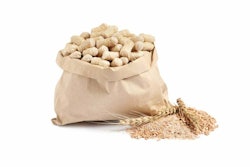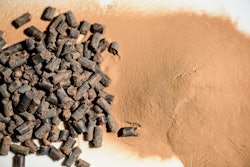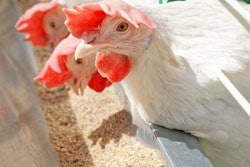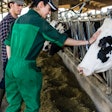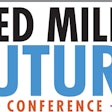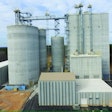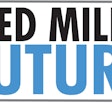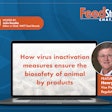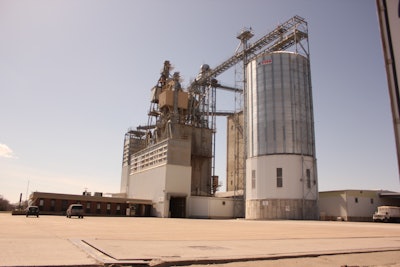
Central Valley Ag (CVA), a York, Nebraska-based farmer-owned cooperative with locations in three states, including Kansas and Iowa, istransitioning its second feed millto antibiotic-free (ABF) to fuel a growing desire for ABF products.
Robert Turek, CVA’s senior vice president of feed, said the cooperative’s future cannot be reliant on commodity-based livestock operations. The leadership shifted investment into high-value products and converted its Hinton, Iowa, feed mill into an ABF pet food facility in 2018 as a result.
After that success, the cooperative committed to converting a second location to ABF feed in Duncan, Nebraska. With the Duncan facility, CVA's capacity to produce ABF feed has increased tenfold and new opportunities have opened to its members.
“This reflects our focus on the consumer and the end users and fulfils our members’ mission,” Turek said.
CVA has become a leader in ABF feed production and is well positioned to continue to meet the demands of the markets for the foreseeable future.
“This is a testament to their commitment to their members and the customers they serve. Our goal is to move into segments that will, first of all, have the greatest impact on growth, and second, support our vision statement to become a world-class cooperative that serves members with a diversified mix of opportunities,” Turek added.
As CVA expanded its ABF feed production capacity, the potential health risks associated with antimicrobial resistance (AMR) have made significant impact. Turek explained that gram-negative bacteria are complicated to treat due to antibiotic resistance.
“It’s lethal and life-changing in terms of the damage it can do to people," he said.
Feed’s role in addressing antibiotic resistance
The introduction of antibiotics into livestock and poultry feed began in the 1940s as a convenient and inexpensive means to prevent and treat common animal diseases, as well as to promote growth in animals. In conventional medicine and animal production, strong reliance on antibiotics has led to the rise and spread of antimicrobial resistance. Researchers around the world have discovered that transitioning to ABF feed is an effective strategy to reduce the prevalence of AMR.
Several countries have banned the use ofantibiotics in poultry feed, and the U.S. Food and Drug Administration (FDA) has regulated antibiotics in feed since the 1980s. This is because the overuse of antibiotics in animal feed can lead to the creation of antibiotic-resistant bacteria. This can be dangerous to humans as it makes it more difficult to treat bacterial infections.
ABF production is expected to rise in other species as alternative animal health treatments demonstrate positive results. Approximately 60% of U.S. broiler production today is ABF, and ABF production in other species is expected to rise, as well. This rise in ABF production is due to the growing demands from consumers and retailers for humane and sustainable animal health treatments. By the end of the next five years, ABF production will account for more than 70% of total U.S. broiler production.
Turek said he’s observed better production numbers by those in the ABF production business than some producers who continue to feed antibiotics. Consumers and retailers are increasingly concerned about animal welfare and food safety, and ABF production is seen as a way to address those concerns.
Additionally, ABF production requires less labor and fewer resources, making it more sustainable and cost effective. These factors have led to a rise in the popularity of ABF production, and by the end of the next five years, it is expected to account for the majority of U.S. broiler production.
“We needed to look into this more carefully for the good of our society, instead of rejecting it,” Turek said. “We had to come up with a way to do that.”
Conversion process and testing protocol
Taking Duncan's 1969 feed mill from conventional feed production to ABF production required deep cleaning, equipment replacement, and ongoing testing to meet customer standards and meet human-food-grade standards. To meet these standards, they had to change their production process from grinding and mixing feed with antibiotics to grinding and mixing feed without antibiotics. They also had to conduct ongoing testing to ensure their products met the higher standards set by their customers.
By taking advantage of capital expenditures due at the facility, CVA was able to replace equipment that was no longer cost effective and save maintenance expenditures.
As Turek said: "The timing was right because we were already replacing elevator legs, conveyor belts, and mixers." It is best if equipment that has been exposed to antibiotics can be removed and replaced with brand new equipment when converting to ABF.
 From left: Robert Turek, SVP Feed; Aaron Blake, Regional Feed Operations Manager; James Kreikemeier, East Region Feed Operations Manager; and Jesus Lopez, Manager of Feed Operations, at a July 2023 open house for the Duncan feed mill.
Central Valley Ag
From left: Robert Turek, SVP Feed; Aaron Blake, Regional Feed Operations Manager; James Kreikemeier, East Region Feed Operations Manager; and Jesus Lopez, Manager of Feed Operations, at a July 2023 open house for the Duncan feed mill.
Central Valley Ag
In order to remove antibiotic residues from previously used equipment, such as the ingredient and finished feed bins, ground corn is used to flush them out. To confirm that their flushing treatments — or soap treatment or high-pressure wash for stubborn antibiotics — successfully work, CVA regularly performs residual testing.
Using its testing program, CVA makes sure the feed it manufactures aligns with its customers' ABF labels.
“Our process involves taking assays on flush material that runs through any of our equipment or bins, and it’s tested to detect any stray residual antibiotics that may be present,” Turek said. “We’re testing for tiny measurements — well below 5 parts per million to 1 part per million.”
Turek said CVA collaborates closely with its customers to meet their specific requirements rather than following a standardized ABF feed facility certification.
“Each of our customers has their own parameters, so doing these things independently would become redundant, or we might risk heading in a direction that may not necessarily meet their needs,” Turek said. “We stay involved with different species of animal and livestock producers to conform to the standards they publish for themselves, working with them hand-in-hand to meet their requirements.”
Biosecurity considerations for human-food-grade feed mills
Considering the Duncan feed mill is an ABF facility, it is considered a food facility for humans. Despite not being a certified label, the distinction pertains to the safety of products manufactured at a facility when consumed by humans — whether intended for human consumption, animal consumption or pet consumption.Salmonellaelimination is a major factor in producing human-grade food, and continuous control must be implemented to achieve it.
In the Hinton and Duncan feed mills, CVA maintains strict cleanliness and testing procedures to ensureSalmonella-free operations. But due to its prevalence, maintainingSalmonella-free facilities is a constant challenge. To ensure the safety of the feed, CVA regularly tests its feed forSalmonella, and any feed that tests positive is discarded. CVA also works closely with suppliers to ensure that all feed is sourced fromSalmonella-free facilities. Additionally, the company has implemented strict biosecurity protocols to preventSalmonellacontamination.
Salmonellatesting is conducted at least monthly, and CVA collaborated with a feed customer that has its own lab to conduct swab tests in various parts of Duncan's facility.
If a swab tests positive forSalmonella, there are strict protocols for washing out the affected area until it’s eliminated. It is necessary to repeat the test to confirm that the particular bacteria strain detected is not present.
“Salmonellais so pervasive and it’s not easy to get rid of, but you can eliminate it,” Turek said. “The fact that we areSalmonella-free at both mills is something of which our employees are proud, since we know it affects livestock and other animals.”
Biosecurity is of utmost importance to CVA to protect its customers’ integrity and to prevent the spread of diseases. The company implements strict biosecurity standards at all its feed mills, particularly those handling high-value products, such as closely monitoring traffic and enforcing a code of conduct for employees.
“We go to great lengths to ensure we’re not the spread vector for diseases of any kind,” Turek said. “For example, we prohibit our drivers and mill employees from being in the poultry business or having chickens on the farm, if they live on a farm or ranch. This is because ducks and fowl carry the potential for spreading avian influenza.”
鉴于最近的毁灭性的高度c的暴发ontagious diseases in poultry and swine businesses, disinfection is a crucial aspect of CVA’s biosecurity program. Delivery equipment and trucks are regularly sanitized to prevent disease transmission. CVA keeps detailed records of these practices and offers customers the opportunity to inspect them.
Central Valley Ag’s focus on improving human health by investing in high-value segments led to the successful transition of two feed mills to ABF production. Converting the Duncan feed mill fulfills CVA’s mission to meet consumers’ evolving needs while benefiting their members’ businesses for the long term.






